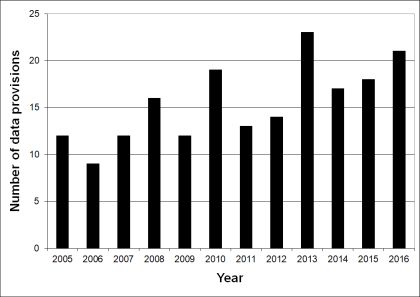Policy
Use for policy purposes & public awareness.
The multispecies population indices (indicators) produced by PECBMS have been the main outputs used for various policy purposes. Our European common bird indicators are included among the Streamlining European Biodiversity Indicators (SEBI), EU common bird indicators are part of the Indicators of Sustainable Development of the EU, and the European farmland bird indicator has been accepted as biodiversity indicator for EU´s Structural Indicator. National versions of the Farmland bird indicators have also been approved as the Regulation indicators in the EU´s Rural Development Plans (Council Regulation (EC) No 1698/2005).
The indicators produced by PECBMS have been used by other international institutions too, Organisation for Economic Co-operation and Development (OECD), United Nations Environment Programme (UNEP), European Environment Agency (EEA) link, Secretariat of the Convention on Biological Diversity, or European Court of Auditors among others. The indicators have also been included in the Living Planet Index (LPI).
The graph below shows the cases when the PECBMS coordination unit provided data for policy or public awareness purposes from 2005 to 2015. For example, in 2014, we provided the latest European Farmland bird indicator to the EEA for the fact sheet to IRENA indicators or the BirdLife International for their press release on CAP reform or the European index for individual species for various papers or publications. Since many users extract data from the web site without informing the PECBMS coordination unit, the figures are probably underestimated. PECBMS also contributed the latest EU indicators to the first European Red List of Birds, published in June 2015.

The development of bird indicators by PECBMS has also triggered the development and use of such indicators at the national level. Overview of the national indicators with links to national web sites can be found here and on the Biodiversity Indicators Partnership (BIP) website, which is a global initiative to promote the development and delivery of biodiversity indicators.